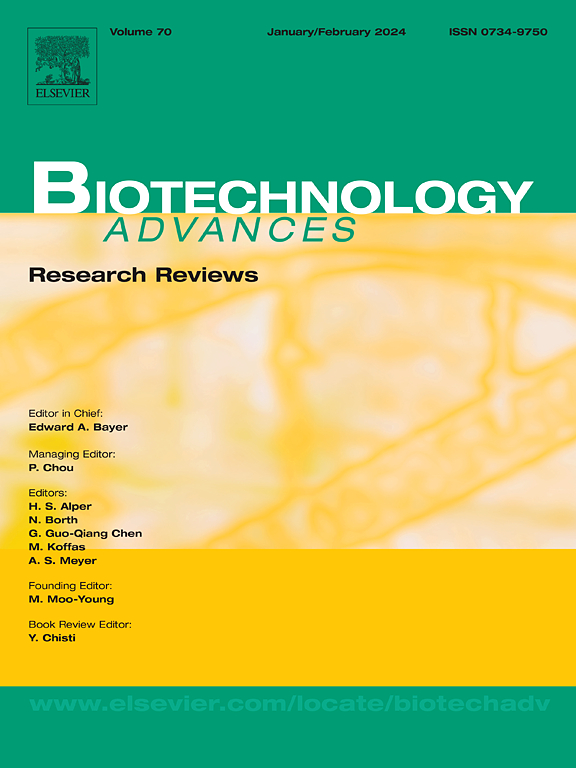Hydroxybenzoic acids: Microbial metabolism, pathway engineering and products
IF 12.1
1区 工程技术
Q1 BIOTECHNOLOGY & APPLIED MICROBIOLOGY
引用次数: 0
Abstract
Hydroxybenzoic acids (HBAs) are plant secondary metabolites exhibiting antioxidant, antiviral, anticancer and antibacterial activities. A high and constantly increasing demand for these compounds underlines the need for novel and efficient production methods, as commonly applied plant extraction and chemical synthesis approaches are susceptible to low yields and are environmentally hazardous. Switching to biotechnology and replacing petroleum-based chemicals has potential to improve eco-efficiency in sustainable bioeconomy. With the increased focus on the production of materials using renewable resources and bio-based feedstocks, microbial fermentation and engineering drives the development and optimization of sustainable bioproduction. This systematic review summarizes current knowledge of microbial HBAs metabolism and biosynthesis. Here, the existing challenges are highlighted and the potential strategies for improved microbial production of HBAs are identified. Key aspects of HBAs metabolism and complexity of the factors related to bacterial strain selection, titer, and bioprocess strategy are examined. The opportunities of HBAs bioproduction using engineered microbial cell factories are discussed in detail and insights for synthesis improvement are presented.
羟基苯甲酸:微生物代谢、途径工程和产物。
羟基苯甲酸是植物次生代谢产物,具有抗氧化、抗病毒、抗癌和抗菌活性。对这些化合物的高需求和不断增加的需求强调需要新的和有效的生产方法,因为通常应用的植物提取和化学合成方法容易产生低产量并且对环境有害。转向生物技术和取代石油基化学品有可能提高可持续生物经济的生态效率。随着人们越来越关注使用可再生资源和生物基原料生产材料,微生物发酵和工程推动了可持续生物生产的发展和优化。这篇系统的综述总结了目前关于微生物HBAs代谢和生物合成的知识。本文强调了现有的挑战,并确定了改善HBAs微生物生产的潜在策略。HBAs代谢的关键方面和与菌株选择、滴度和生物过程策略相关的因素的复杂性进行了检查。详细讨论了利用工程微生物细胞工厂生产HBAs的机会,并提出了合成改进的见解。
本文章由计算机程序翻译,如有差异,请以英文原文为准。
求助全文
约1分钟内获得全文
求助全文
来源期刊

Biotechnology advances
工程技术-生物工程与应用微生物
CiteScore
25.50
自引率
2.50%
发文量
167
审稿时长
37 days
期刊介绍:
Biotechnology Advances is a comprehensive review journal that covers all aspects of the multidisciplinary field of biotechnology. The journal focuses on biotechnology principles and their applications in various industries, agriculture, medicine, environmental concerns, and regulatory issues. It publishes authoritative articles that highlight current developments and future trends in the field of biotechnology. The journal invites submissions of manuscripts that are relevant and appropriate. It targets a wide audience, including scientists, engineers, students, instructors, researchers, practitioners, managers, governments, and other stakeholders in the field. Additionally, special issues are published based on selected presentations from recent relevant conferences in collaboration with the organizations hosting those conferences.
 求助内容:
求助内容: 应助结果提醒方式:
应助结果提醒方式:


